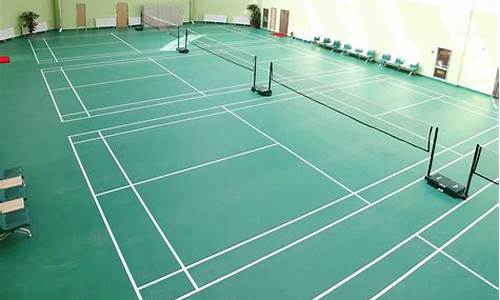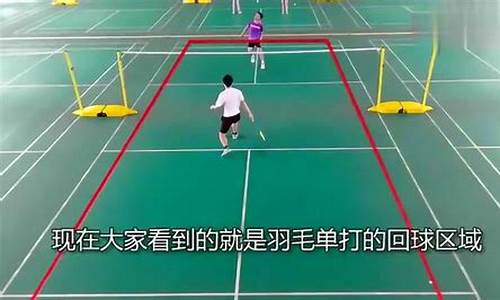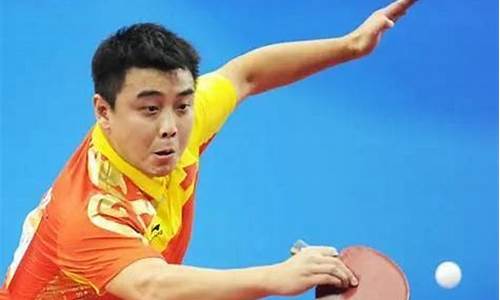您现在的位置是: 首页 > 体育赛程 体育赛程
英语体育比赛用语_英文体育比赛的观众
tamoadmin 2024-08-17 人已围观
简介1.英文版 奥运场地鸟巢简介2.体育节目中经常提到的“帽子戏法”是什么意思?3.旅游景点北京鸟巢介绍英文 北京鸟巢介绍英语从“中国瓷”到“中国词” NBA流行说汉语2004-05-13 11:23:00 世界体育周报--------------------------------------------------------------------------------西方人最早认识中国
1.英文版 奥运场地鸟巢简介
2.体育节目中经常提到的“帽子戏法”是什么意思?
3.旅游景点北京鸟巢介绍英文 北京鸟巢介绍英语

从“中国瓷”到“中国词” NBA流行说汉语
2004-05-13 11:23:00 世界体育周报
--------------------------------------------------------------------------------
西方人最早认识中国是从瓷器开始的,CHINA这个英文名称也是从瓷器的英语演化而来。进入2004年后,向来为西方人所看重的“中国瓷”
渐渐让位给“中国词”。很多学过英语的中国人喜欢在说话时加入一两个英文词,一来显得时髦,二来代表本人有一定的学养。当姚明以一种
前所未有的气势登陆美国后,美国人同样以能说几个中国词儿为荣。这一趋势在NBA的电视转播者中尤为明显。
随着美国职业体育,特别是NBA在中国的流行,中国的电视节目主持人千方百计用中国话或某种地方话来解释稀奇古怪的美国俚语。因此,“掐死对手”这样的用语在中国篮球迷当中不断流传开来。汉化后的美国俚语再结合了中国俚语,又返回了美国。
今年的3月份,整个中国大陆的电视观众观看了,NBA联盟当中萨克拉门托国王队与金州勇士队的比赛。比赛的最终结果是勇士队不得不屈服于它的对手国王队。当时,美国ESPN电视台解说员使用了一个标准的中国俚语“痛宰”。这个词的意思是“痛打致死”。“痛宰”不是美国观众从NBA解说里听到的第一个中国词,此前解说员们已经陆陆续续地从嘴里迸出很多泊来词了。ESPN电道更是主动地将英语解说翻译成合适的中国话。
解说员嘴里的“狼王”
当中国的传统故事花木兰被好莱坞改编成卡通**时,美国人对中国的了解还远不如现在,如今谁也不会认为一个解说员说一两个中国词很可笑,很卡通了。具有勃勃生命力的中文,正在通过本国兴起的NBA篮球热向外传播,美国是它的一个远在太平洋彼岸的港口。
除了中国大陆,中式俚语还在亚洲的岛国新加坡登陆,球迷们到处可以听到类似的中国俚语。新加坡的电视广播员林先生经常在洛杉矶进行NBA比赛的现场评论,对于湖人队的中锋球员沙克·奥尼尔颇为熟悉。新加坡球迷从这位广播员的口中经常可以听到“沙克”这种纯粹中式称呼。
对于在西部赛区季后赛里成绩不错的球队的队员,NBA解说员也开始使用特殊的中式称呼。据说,这些特殊的称呼在世界上使用人数最多的语言——汉语当中颇为流行。譬如在形容明尼苏达森林狼队的主力球员凯文·加内特时使用了标准的中文发音的“狼王”(LANG WANG)或者狼群的国王(WOLF KING)。新加坡的林先生解释说,解说员们称呼加内特为狼王的意思是,他是森林狼队的***。这样就可以使用汉语中的传统俚语,向观众恰如其分地描绘加内特在狼队的地位。”
让美国人了解“盖帽”
林先生是目前美国电视体育频道ESPN雇用的体育电视节目解说员和研究人员之一。为了占领重要的体育市场,ESPN等美国大型传媒公司也让林先生等人组成的专门班子将美国的职业体育词汇翻译成为汉语。随着姚明在NBA的地位不断飙升,亚洲的体育明星扩大了美国职业体育在亚洲,特别是中国体育当中的影响,亚洲观众看美国职业体育比赛特别是NBA比赛的数量不断增加。
ESPN体育电视网络属于美国著名的沃尔特·迪斯尼公司和美国头号传媒赫斯特报系公司以及著名的新闻公司。现在,ESPN的电视体育节目已经扩展到1.85亿个家庭,是1996年时的三倍。
然而,西方体育的语言中包含了许多外人非常难以理解的俚语和俗话。要想让新的篮球电视观众理解这样的语言确实非常困难。在许多情况下,相当一批体育词汇难以直接翻译过去(因为其他语言当中难得想出对应的词汇或者短语)时,电视解说员必须避开这样的专门词汇,而不得不寻求一些符合亚洲生活方式的通俗易懂的言词。比如,中国的解说员常用的俚语“盖帽”意思是“用一个帽子罩住你的头”,其实本来的意思是将对方的投球封住。
ESPN的汉化努力
ESPN的生产部副总经理胡夫·贝文说:“作为讲英语的人来说,最初听到这样的词汇肯定会感到有些莫名其妙。”贝文在体育语言方面有着丰富的经验。出生在英伦三岛威尔士的贝文曾经帮助英国广播公司将体育电视节目翻译非常难懂的威尔士话。
应当承认,ESPN在将美国的职业体育语言变成亚洲人特别是中国人喜闻乐见的俚语方面走在了前面。上个世纪最后5年时间里,ESPN意识到,要想更多的占领体育传媒市场,就必须寻求更多的研究人员,推出更多的口语化词汇,这样才能够使得解说员和电视评论员更更容易与亚洲特别是中国观众的联系。贝文说:“我们认为,我正在倡导一些趋势。我相信这些趋势经过不断地加工和整理,将成为一种国际化的体育语言,随之形成了一套国际规范。我们的观众当中,特别是除了NBA之外的美国橄榄球联赛或者美国冰球联赛,也将从篮球语言的创新当中得到益处。”据悉,ESPN正在考虑,为了让更多的亚洲观众了解美国的职业篮球和其他职业体育比赛,准备开辟泰语和马来西亚语的电视体育现场直播和评论。
中国人口中的“飞人”
在中国,甚至NBA运动员的名字,说出来也相当有趣。每一个NBA的运动员的名字都有对应的中国名字。有的时候,一个NBA著名运动员用中文可以翻译成为几种不同的名字。在中国的台湾省,大名鼎鼎的迈克尔·乔丹按照标准的汉语,被翻译成了乔丹。可是在广东话当中,乔丹的名字音译成了MAI KOU ZO DOEN,用中文表示为佐敦。关于乔丹名字的这两种读音都是按照乔丹的发音演变出来的。乔丹绰号在中国人嘴里变得更为有趣。在中国,乔丹的绰号是“空中飞人”。它的大概意思是“一个可以在空中飞翔的人”。
NBA中名字较长的运动员用中文很难表达。在中国,一家人有个姓,如姓陈、姓王或者姓胡。比如,希腊著名的足球队PANATHAINIKOS队。在中国人当中,很少有人可以准确地说出这支球队的正确发音。而且,许多职业球队的运动员身后的名字也让中国人难以应付。比如,西班牙足球运动员JOSE MARIA GUTIERREZ如果按照西班牙语译名手册,应当是何塞·玛利亚·古铁雷斯。可是,这位运动员球衣的背后却写着“GUTI”,让中国人摸不着头脑,最后此人的名字被简化为古蒂。
NCAA的代名词
不过,美国大学生篮球联赛(NCAA)相当。众所周知,美国大学生篮球联赛在每年的3月份举行。每年都有NCAA的运动员走入NBA联盟,因此中国人对于NCAA的篮球兴趣越发浓厚。美国NCAA篮球大赛最为响亮的中文名字是“疯狂的三月”。现在,解说员需要将参加大学生联赛的64支球队的所有运动员的名字都用3个中文字来表示出来。为了尽快搞出相应的汉语名字,ESPN的翻译人员不得不连续工作48小时。事后,一位解说员兼翻译说:“对于我们这些研究体育语言的人来说。我们也经历了一个疯狂的三月。”
英文版 奥运场地鸟巢简介
帽子戏法是指一个足球球员在比赛中进了三个球,就叫帽子戏法。进四个球就是大四喜,进两个球就是双响,也可以说是梅开二度。
20世纪,hat trick很快被引用到其它体育比赛中,如hockey、baseball和等,指参赛者在同一场比赛中独中三元、连续三次得分的佳绩。其具体含意就是在一场比赛中,一名队员踢进对方球门三个球。
1958年世界杯巴西对法国的半决赛中,贝利一人连入三球,淘汰了法国队,《贝利自传》将此次辉煌辟为一章节,题目就叫“帽子戏法”。“帽子戏法”的说法,在中国流行较晚,大约始于中译本《贝利自传》的问世。
扩展资料:
足球世界杯历史上的帽子戏法:
1、阿根廷的圭勒莫·斯塔比尔(Guillermo Stabile,1930年7月19日,世界杯小组赛,阿根廷6-3墨西哥);
2、巴西的贝利(Pele,1958年6月24日,世界杯半决赛,巴西5-2法国);
3、葡萄牙的尤西比奥(Eusebio,1966年7月23日,世界杯1/4决赛,葡萄牙5-3朝鲜(打进4球);
4、英格兰的杰夫·赫斯特(Geoff Hurst,1966年7月30日,世界杯决赛,英格兰4-2德国);
5、德国的盖德·穆勒(Gerd Muller,10年6月7日,世界杯小组赛,德国5-2保加利亚;10年6月10日,世界杯小组赛,德国3-1秘鲁,两次);
6、意大利的保罗·罗西(Paolo Rossi,1982年7月5日,世界杯小组赛,意大利3-2巴西)。
体育节目中经常提到的“帽子戏法”是什么意思?
这是鸟巢上的简介,看看合用不:
Located at the southern part of the Olympic Green in Beijing, the National Stadium is the main stadium of the 29th Olympiad in 2008. Occupying an area of 21 hectares, it has a floor space of 258,000 square meters. Its seating capacity amounts to 91,000, including 11,000 temporary seats.
The venue will host the opening and closing ceremonies of the Beijing Olympic Games and Paralympic Games, the track and field competitions, and the football finals. After the Olympics, the stadium will become a large-scale sports and entertainment facility for the residents of Beijing -- an architectural landmark and Olympic legacy.
The main body of the National Stadium has a design life of 100 years. Its fire resistance capability is first-rate, and it can withstand an eight-magnitude earthquake. The water-resistance capability of its underground project is also first-rate.
The main body of the National Stadium is a colossal saddle-shaped elliptic steel structure weighing 42,000 tons. It is 333 meters long from north to south, 294 meters wide from east to west, and 69 meters tall.
The main body's elements support each other and converge into a grid formation, just like a bird's nest with interlocking branches and twigs. Being a seven-story shear wall system, the stadium's stand has a concrete framework. The upper part of the stand and the stadium's steel structure are separated from each other, but both are based on a joint footing. The roof of the National Stadium is covered by a double-layer membrane structure, with a transparent ETFE membrane fixed on the upper part of the roofing structure and a translucent PTFE membrane fixed on its lower part. A PTFE acoustic ceiling is attached to the side walls of the inner ring.
The construction of the National Stadium followed the PPP mode (Private + Public + Partnership ), and it is co-owned by the Beijing State-Owned Assets Management Co. Ltd (BSAM), who shares 58 percent of the total assets, and the China International Trust and Investment (CITIC) Consortium, who holds the rest of the assets.
Composed of BSAM and CITIC, the National Stadium Co. is responsible for financing, construction, operation and management of the project. CITIC has a post-Games licensed operation right for 30 years.
The National Stadium is a complex structure, posing great difficulties for its designers and constructors.
1. Large and hey steel parts
The fracture surface of the largest truss column -- the major load-bearing component of the roof structure -- measures 25m x 20m, with a height of 67m. The maximum weight of a single column is 500 tons. The main truss is 12m tall. The maximum span between and through the two columns amounts to 145.577+112.788m, and the maximum span between the two trusses stands at 102.39m. Each truss column is of great bulk and weight, and so are the main trusses.
2. Complex nodal joints
Because the structural elements in the project are box-typed, many elements intersect spatially among the steel parts. Besides, the complex nature of secondary structures has resulted in the diversity of nodal joints of the main structures, requiring accurate and sophisticated manufacturing and installation.
3. Tight schedule
In addition to the huge workload, the allotted construction period is short. Hing started on December 24, 2003, the project is expected to be completed by the end of 2007, with the inauguration time scheduled for March 2008. Therefore many operations he to be conducted on a limited terrain, causing a very tense situation.
4. The hoisting work extended across the winter and spring, so the workers he had to defy both rainy and cold conditions in the winter to continue their work.
The workers he overcome tremendous engineering and technical challenges in the process of construction:
1. Difficult work arrangement
They need to do very detailed research of operations and follow meticulous arrangements to complete various kinds of work within a limited workspace.
2. Difficult hoisting of steel parts
To facilitate the assembly of the steel parts, the workers he to use a prone position to assemble the truss columns, which requires a turnover process before they are hoisted. The choice of the hoist points and lug hooks pose great difficulties in the face of bulky and cumbersome steel parts, and the change of pulling stress from three directions must be taken into consideration. The workers need to meticulously rectify angles and positions of the box-typed sectional parts to ensure accurate abutment during the hoisting process.
3. Difficult stabilizing process
They also he to fight the hey wind load and keep the stability of the steel parts by following a strict working order and use lateral stability measures including the use of anchoring method and wind-holding ropes.
4. Difficult welding
The welders not only face a huge work volume, but also he to work on both the thin steel sheets and thick steel slabs, on high-strength and cast steel elements, and take downward, vertical or overhead positions while welding. They face temperature changes, steel deformation and intensive labor. They need to work above ground, in winter rain and under windy conditions.
5. Difficult installation
The workers face difficulties in ensuring accurate installation as the steel parts and the related gigs and fixtures can be deformed easily under their own dead weight and the change of temperatures. The workers must take pre-installation measures to rectify and relieve the errors that might occur in the process of installation.
旅游景点北京鸟巢介绍英文 北京鸟巢介绍英语
帽子戏法
在现代足球中,一个球员在一场比赛中独中三元被称作“帽子戏法”,英文为“Hat-trick”。
“帽子戏法”的来历
这个说法源于19世纪70年代在英国广为流行的板球比赛。板球和美国的棒球相似,都要求投球手投掷的速度越快越好,对方击球越远越好。自有板球以来,凡进板球场观赛的球迷都严格遵守着一条规矩:一迈进球场大门便须脱帽,这意味着对球场上所有球员、裁判和观众的尊重。因此,帽子就代表了尊重。一般说来,如果一名投球手连续投出3个好球而将对方3名球员淘汰出局,是件相当神奇的事。如果碰到这样的情况,裁判便授予那个投手一顶帽子,作为一种至上的荣誉象征。简言之,“帽子戏法”的本意就是板球手连续用3个球得分而获得一顶帽子鼓励,这个词19世纪70年代才出现在印刷品中的。
后来,“帽子戏法”被引用到足球比赛中,其具体含意就是在一场比赛中,一名队员踢进对方球门三以上个球。在1958年世界杯巴西对法国的半决赛中,贝利一人连入三球,淘汰了法国队,《贝利自传》将此次辉煌辟为一章节,题目就叫“帽子戏法”。
另外,“帽子戏法”的应用范围也不限于体育领域,人们还用它来形容任何连续3次的成功。“帽子戏法”的说法,在中国流行较晚,大约始于中译本《贝利自传》的问世。例如前英国首相撒切尔夫人,三度竞选连获成功,这史无前例的成就,美国《时代周刊》当时称之为“玛格丽特·撒切尔帽子戏法”。
足球世界杯历史上的“帽子戏法”
下面列举出一些足球世界杯历史上的帽子戏法:
1、巴西的贝利(1958年世界杯半决赛胜法国);
2、葡萄牙的尤西比奥1958年世界杯1/4决赛胜朝鲜4-3,打进4球);
3、英格兰的杰夫·赫斯特(Geoff Hurst,1966年世界杯决赛胜德国);
4、德国的盖德·穆勒(Gerd Muller,10年世界杯5-2胜保加利亚,3-1胜秘鲁,两次);
5、意大利的保罗·罗西(Paolo Rossi,1982年世界杯小组赛胜巴西);
6、匈牙利的拉兹罗·基斯(Laszlo Kiss,1982年世界杯小组赛10-1胜萨尔瓦多);
7、阿根廷的加布里埃尔·奥马尔·巴蒂斯图塔(Gabriel Omar Batistuta,1994年世界杯4-0胜希腊,1998年世界杯5-0胜牙买加,两次);
8、德国的米罗斯拉夫·克洛泽(Mirosl Klose,2002年世界杯小组赛8-0胜沙特阿拉伯)。
“Hat-trick”意为:帽子戏法。特指在一场比赛中连进3球。这个词源于19世纪70年代在英国广为流行的板球比赛。在板球比赛中,如果一名投球手连续投出3个好球而将对方3名球员淘汰出局,他通常会得到一顶新帽子作为奖品,这就是“hat trick”的来历。
现在“hat trick”的应用范围已不限于体育领域,人们还用它来形容任何连续3次的成功。尤以足球比赛最为常见。
帽子戏法是英文Hat-trick的意译,起源于板球比赛。队员使用的球拍是一块木板,打的是红皮小球。自有板球以来,凡进板球场观赛的球迷都严格遵守着一条规矩:一迈进球场大门便须脱帽,这意味着对球场上所有球员、裁判和观众的尊重。在这里,帽子就代表了尊重。 一般说来,板球投手能用连续3个球得分,是件相当牛的事。早在19世纪,板球俱乐部碰到这样牛的事,便授予那个投手一顶帽子,作为一种至上的荣誉象征,而且观看比赛的观众也会脱下帽子向选手致意。这叫叫作”帽子戏法”,简言之,帽子戏法的本意就是板球手连续用3个球得分而获得一顶帽子鼓励的游戏啦!
由板球比赛到橄榄球比赛,足球比赛,以及其它一些比较类似的球类比赛,帽子戏法就这样用开啦!
世界足坛千奇百怪之帽子戏法
1.点球帽子戏法
2004年6月3日,06世界杯预选赛南美赛区巴西对阿根延,罗纳尔多三次突入禁区造成对方球员犯规,并三次亲自将自己制造的点球罚入,以一已之力击败老对手。点球帽子,殊为罕见。
2.点球不进帽子戏法
1999年7月4日,在美洲杯上对阵哥伦比亚,阿根廷以0比3败北,是役阿根延三获点球,前锋帕勒莫三次主罚,均没能罚进。屡失屡罚,疯子的外号真是名不虚传。连帕勒莫自己都说:如果那三个点球全部罚进的话,我也就没有现在这么出名了.可见,点球不进帽子戏法是多么深入人心.
3.扑点球帽子戏法
上一周刚刚结束的慈善盾杯中,范德萨扑出切尔西三个点球,为曼联战胜切尔西立下汗马功劳。老范宝刀不老,依旧牛气哄哄。
4.任意球帽子戏法
1998年12月13日,时任拉齐奥后卫的米哈伊洛维奇在一场意甲比赛拉齐奥5:2桑普多利亚中三次任意球破门,从此奠定一代任意球大师地位。此后很难有人能做到老米做过的事。小贝不能,卡洛斯也不能。小罗不能,儒尼奥尔也不能。
5.黄牌帽子戏法
06年世界杯,克罗地亚和澳大利亚的比赛,主裁判波尔在开赛第62分钟、第90分钟分别给了克罗地亚球员西米奇一张黄牌,但是居然忘记将他罚下场。第94分钟西穆尼奇又犯规,波尔又出示一张黄牌时才想起来将他罚下场。球员在一场比赛中得了三张黄牌才被罚下场。这一场景恐怕会成为绝无仅有的一幕。
6.先生帽子戏法
近的不用说,有罗纳尔多和齐达内的FIFA先生帽子戏法,远的也有克鲁伊夫、普拉蒂尼、巴斯腾的金球奖帽子戏法。一般的球员毕其一生也无法获得一个先生奖项,而这几位,只能说,他们太牛了。
7.超级帽子
球场上上演帽子戏法固然不易,若要在一场比赛中进三个以上的球更是难上加难。若在相当有影响力的比赛中上演大帽子更是难于上青天。在英超,索尔斯克亚曾经两次独中四元,超级替补人如其名;在中,普尔绍,小因扎吉和范尼曾经先后独中四元;00年,克鲁伊维特对阵南斯拉夫时也曾独中四元,更有牛者,俄罗斯人萨连科在94年世界杯上,一场比赛打入五球!!!可惜自从那一仗后,此君就似乎消失了。
8.头球帽子戏法
2002年2月12日,马德里7:0拉斯帕尔马斯的比赛中,马德里前锋莫伦特斯一人独中五员,其中有四个进球是头球。由于只要在一场比赛中进三个球就算作帽子戏法,而莫伦特斯在这场比赛中的头球达到并超过三个,因此他上演了头球帽子戏法。
几个月后的2002年世界杯,德国队的前锋克洛泽复制了莫伦特斯的头球帽子戏法。在小组赛德国8:0沙特阿拉伯的比赛中,克洛泽攻入三球,并且三个球都是头球。
现在,在体育竞赛场合,如果有独中三元的表现,就叫做“帽子戏法”。 帽子戏法,足球用语。专指在一场比赛中,一名队员踢进对方球门三个球。帽子戏法源于刘易斯.卡洛尔的童话《爱丽斯漫游奇境记》。书中说到一位制帽匠能够出神入化地用帽子变戏法。后来,英国板球协会借用其意,给连续三次击中门柱或横木、使对方3人出局的每个投手奖帽子一顶,以显示其出神入化的投球技巧,这便是板球的“帽子戏法”。后来,“帽子戏法”被引用到足球比赛中,其具体含意就是“在一场比赛中,一名队员踢进对方球门三个球”。
鸟巢的介绍英文版,50字就行
2008年北京奥运会主体育场—“鸟巢”
—— Beijing National Stadium (Bird's Nest/Olympic Stadium)
“鸟巢”位于北京奥林匹克公园内、北京城市中轴线北端的东侧,建筑面积25·8万平方米。除了承担奥运会开、闭幕式任务外,还将在这里进行田径、男子足球决赛等奥运会的重要比赛。这个体育场能容纳观众10万人,其中临时坐席2万个。奥运会后,可承担重大体育比赛、各类常规赛事以及非竞赛项目,是北京奥运会的一座标志性建筑,是北京奥运会留下的宝贵遗产,同时也将成为北京市民广泛参与体育活动及享受体育的大型专业场所。
英文介绍
The Beijing National Stadium, also known as the bird's nest will be the main track and field stadium for the 2008 Summer Olympics and will be host to the Opening and Closing ceremonies. In 2002 Government officials engaged architects worldwide in a design competition. Pritzker Prize-winning architects Herzog de Meuron collaborated with ArupSport and China Architecture Design Research Group to win the competition. The stadium will seat as many as 100,000 spectators during the Olympics, but this will be reduced to 80,000 after the games. It has replaced the original intended venue of the Guangdong Olympic Stadium. The stadium is 330 metres long by 220 metres wide, and is 69.2 metres tall. The 250,000 square metre (gross floor area) stadium is to be built with 36 km of unwred steel, with a combined weight of 45,000 tonnes. The stadium will cost up to 3.5 billion yuan (422,873,850 USD/ 325,395,593 EUR). The ground was broken in December 2003, and construction started in March 2004, but was halted by the high construction cost in August 2004.
In the new design, the roof of the stadium had been omitted from the design. Experts say that this will make the stadium safer, whilst reducing construction costs. The construction of the Olympic buildings will continue once again in the beginning of 2005.
In depth
The stadium's earance is one of synergy, with no distinction made between the facade and the superstructure. The structural elements mutually support each other and converge into a grid-like formation - almost like a bird's nest with its interwoven twigs. The spatial effect of the stadium is novel and radical, yet simple and of an almost archaic immediacy, thus creating a unique historical landmark for the Olympics of 2008.
The stadium was conceived as a large collective vessel, which makes a distinctive and unmistakable impression both from a distance and when seen from up close. It meets all the functional and technical requirements of an Olympic National Stadium, but without communicating the insistent sameness of technocratic architecture dominated by large spans and digital screens.
Visitors walk through this formation and enter the spacious ambulatory that runs full circle around the stands. From there, one can survey the circulation of the entire area including the stairs that access the three tiers of the stands. Functioning like an arcade or a concourse, the lobby is a covered urban space with restaurants and stores that invite visitors to stroll around. Just as birds stuff the spaces between the woven twigs of their nests with a soft filler, the spaces in the structure of the stadium will be filled with inflated ETFE cushions. Originally, on the roof, the cushions were to be mounted on the outside of the structure to make the roof completely weatherproof, but the roof has been omitted from the design in 2004.
鸟巢的英文介绍
Beijing National Stadium also known as the National Stadium, or colloquially as the Bird's Nest, is a stadium in Beijing, China. The stadium was designed for use throughout the 2008 Summer Olympics and Paralympics. Located in the Olympic Green, the $423 million stadium is the world's largest steel structure. The design was awarded to a submission from the Swiss architecture firm Herzog de Meuron in April 2003, after a bidding process that included 13 final submissions.
鸟巢的英文名和介绍
国家体育场鸟巢(National Stadium),位于北京奥林匹克公园中心区南部,为2008年北京奥运会的主体育场。工程总占地面积21公顷,场内观众坐席约为91000个。
举行了奥运会、残奥会开闭幕式、田径比赛及足球比赛决赛。奥运会后成为北京市民参与体育活动及享受体育的大型专业场所,并成为地标性的体育建筑和奥运遗产。
体育场由雅克·赫尔佐格、德梅隆、以及李兴刚等设计,由北京城建集团负责施工。体育场的形态如同孕育生命的“巢”和摇篮,寄托着人类对未来的希望。设计者们对这个场馆没有做任何多余的处理,把结构暴露在外,因而自然形成了建筑的外观。
扩展资料
鸟巢场馆结构:
1,基座
基座与体育场的几何体合二为一,如同树根与树。行人走在平缓的格网状石板步道上,步道延续了体育场的结构肌理。步道之间的空间为体育场来宾提供了服务设施。
2,屋顶
体育场的空间效果新颖激进,但又简洁古朴。体育场的外观就是纯粹的结构,立面与结构是统一的。各个结构元素之间相互支撑,汇聚成网格状,就象编织一样,将建筑物的立面,楼梯,碗状看台和屋顶融合为一个整体。
3,包厢
舒适豪华的装修布置,优质周到的配套服务,清晰良好的观看视野是国家体育场包厢品质的保障。它不仅提供了一个亲临其境的最佳观赛场所,更为社会企业和各界名流搭建一个交际、公关、答谢客户的社交平台。
百度百科-鸟巢









